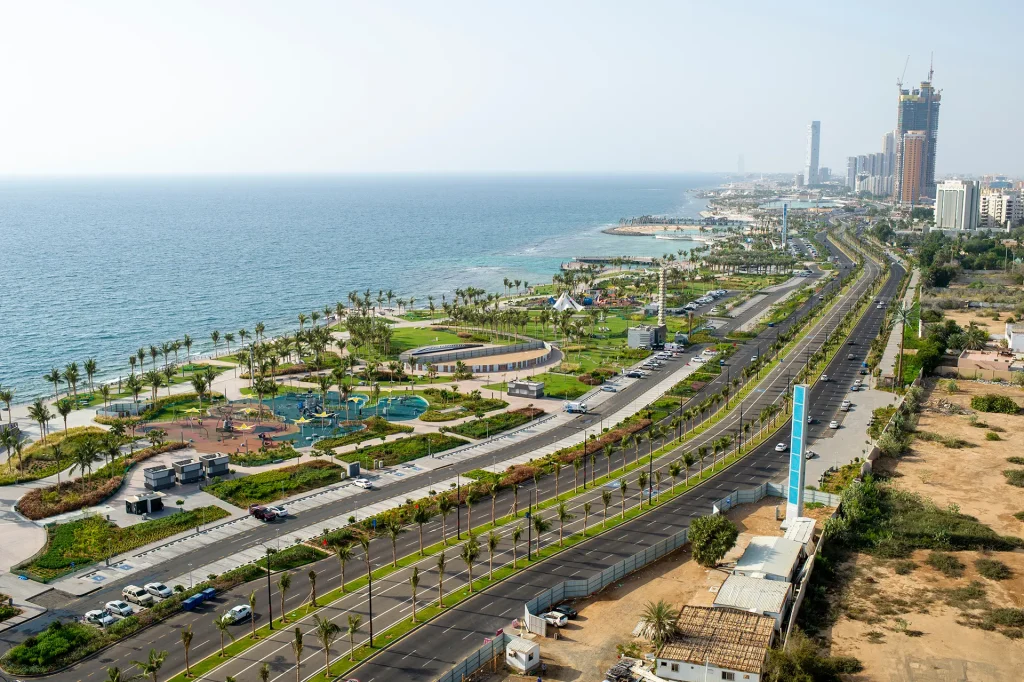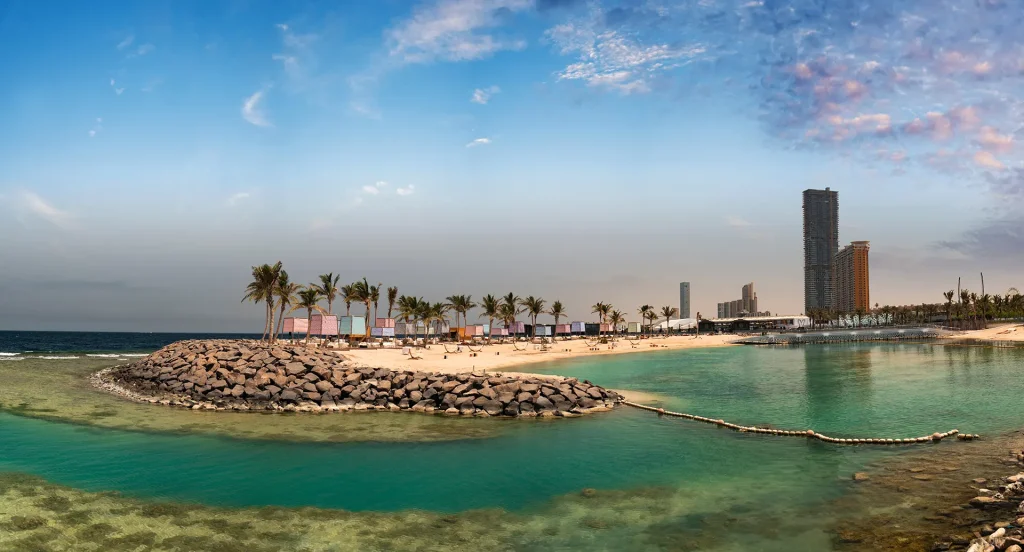Introduction
Since 2019, Saudi Arabia has focused on modernizing its visa process by introducing an automated, electronic visa system (eVisa) to streamline traffic going in and out of the country.
The digital platform enables applicants to complete the entire visa process online, whereas traditionally, travelers were required to submit physical documents and visit a consulate or embassy, or a visa center.
This shift to Saudi visa issuance automation has provided proven benefits to travelers, such as enhancing the application experience with a user-friendly platform and faster processing times. Many applicants now receive their visas within hours of applying. Although not related to the eVisa, travelers can also check Saudi Arabia work visa status online through the official portal, providing greater transparency and convenience.
What is the Saudi Tourist Visa (Saudi eVisa)?
The Saudi tourist visa was introduced as part of Saudi Arabia’s Vision 2030 initiative to boost international tourism. It allows travelers to apply online for their visa and streamline the entry process into the Kingdom.
Currently, foreign nationals from a list of countries are eligible to apply online for the Saudi Arabia e-Visa. GCC residents, who have a residency visa valid for at least 3 months, can also apply online for the Saudi Arabia e-Visa, as well as visa holders and residents in the United Kingdom, the United States, and the Schengen area countries.
Foreign nationals eligible for a visa on arrival are strongly encouraged to apply online for the Saudi Arabia eVisa to avoid airport queues and potential delays.
It is worth mentioning that this does not apply to citizens of Ethiopia, Chad, Iran, Libya, Palestine, and Syria, and they should apply through an embassy/consulate or authorized visa offices.
The tourist eVisa allows visitors to engage in tourism, visit friends and family, and perform Umrah (excluding Hajj). They are not allowed to take part in any long-term activities such as employment, residency, or education and therefore should apply for alternative visas if any of these are their intended reason for travel.
Once the application has been approved, the eVisa is a one-year, multiple-entry permit allowing tourists to stay in the country for up to 90 days. Depending on the circumstances, applicants may receive a single-entry visa.
By making visas more accessible, Saudi Arabia is committed to increasing the Kingdom’s connectivity with the world and positioning itself as a major tourist destination. In 2024, the UN reported that the region is the fastest-growing G20 country, highlighted by a 73% increase in international arrivals into the Kingdom during the first seven months of the year. As a result of the Saudi tourist visa issuance automation program, the country has attracted millions of visitors, which has had an impressive economic impact.

Who is eligible for the Saudi Tourist Visa (Saudi eVisa)?
To answer the question regarding the eVisa: do you need a visa for Saudi Arabia? The answer depends on your nationality. Foreign nationals from the below countries are eligible to apply for the Saudi tourist eVisa.
North America
- Bahamas
- Barbados
- Canada
- Grenada
- Panama
- Saint Kitts and Nevis
- United States
Europe:
- Albania
- Andorra
- Austria
- Belgium
- Bulgaria
- Croatia
- Cyprus
- Czech Republic
- Denmark
- Estonia
- Finland
- France
- Georgia
- Germany
- Greece
- Netherlands
- Hungary
- Iceland
- Ireland
- Italy
- Latvia
- Lichtenstein
- Lithuania
- Luxembourg
- Malta
- Monaco
- Montenegro
- Norway
- Poland
- Portugal
- Romania
- Russia
- San Marino
- Slovakia
- Slovenia
- Spain
- Sweden
- Switzerland
- Ukraine
- United Kingdom
Asia:
- Azerbaijan
- Brunei
- China (including Hong Kong and Macau)
- Japan
- Kazakhstan
- Kyrgyzstan
- Malaysia
- Maldives
- Singapore
- South Korea
- Tajikistan
- Thailand
- Turkey
- Uzbekistan
Africa:
- Mauritius
- Seychelles
- South Africa
Oceania:
- Australia
- New Zealand

The Evolution of Saudi Visa Issuance
Prior to the introduction of the Saudi Arabia eVisa, travelers were required to apply through Saudi embassies or consulates, or authorized visa centers, requiring in-person visits, Saudi Arabia Visa stamping, and physical document submissions. This process was significantly more time-consuming, often requiring applicants to travel long distances to visit their local embassy or consulate, and lengthy approval times, which often took weeks, occasionally even months.
Additionally, the need for numerous pieces of physical supporting documentation added complications to the process, such as being able to provide specific paperwork, such as financial statements and invitation letters.
To combat these issues, visa automation was introduced in September 2019 to make the process hassle-free and boost tourism from eligible countries across the globe.
At the time of its inception, residents from different countries were eligible to apply for the online eVisa or a visa-on-arrival. Now, the country has expanded its digital tourist visa offering to even more countries. Alongside modernizing its visa automation system, Saudi Arabia is rolling out a series of programs to achieve its Vision 2030 goal.
This includes achievements such as increasing the number of Saudi World Heritage sites (from 4 in 2016 to 8 in 2024), developing the Haramain high-speed train from Jeddah airport to Holy Sites, and investing in infrastructure to improve potential tourist destinations, including Soudah Peaks in the ‘Asir region.
With its rich cultural heritage, modern amenities, and growing tourism initiatives, Saudi Arabia is rapidly evolving into a must-visit destination for travelers worldwide.
How the Automated Saudi Tourist Visa System Works
The automated Saudi tourist visa streamlines the application process through the following steps.
- Online Application Submission: Travelers from eligible countries complete their visa applications via the eVisa portal, providing necessary details such as personal information and travel dates.
- Instant Background Checks: The system conducts real-time background checks using advanced data analytics to ensure applicants meet visa requirements.
- Approval Notification: Once approved, the system sends the decision to the applicant’s email.
- Digital Visa Issuance: After approval, the eVisa is issued digitally, accessible for download directly from the email or the visa portal.
- Seamless Entry: Travelers can present their eVisa at the airport, expediting the entry process without needing to visit an embassy or consulate.
Once approved, the visa allows multiple entries within its validity period at designated entry points.
Benefits of Automation for Travelers
As previously mentioned, the transition to the Saudi eVisa has proven attractive to millions of international visitors. Some of the benefits of switching to an automated system include:
- Faster processing: Compared to the traditional system, applicants may now receive approvals within hours—or even minutes—instead of weeks. This can alleviate unnecessary stress for travelers who need to make quick decisions and travel at short notice, providing more flexibility for plans.
- Online Application: By eliminating the need for embassy visits, travelers can apply for a Saudi tourist visa from anywhere in the world and at any time of day.
- Reduced paperwork: The online system reduces the hassle of providing extensive physical documentation, reducing stress and simplifying the overall process.
- Seamless Travel Experience: With digital visa issuance, travelers receive their visas instantly by email and can present them electronically at the border, speeding up entry and providing immediate access to their visa when asked.
- Cost-Efficiency: By reducing the need for physical paperwork, travel to embassies or consulates, and manual labor, automation makes the entire visa process more cost-effective.

How has Visa Automation affected businesses?
Streamlining visa automation processes and boosting tourism throughout the country will have an extremely positive impact on businesses in Saudi Arabia. With increased traffic to the Kingdom, so comes more money being invested in the hospitality, travel and tourism sectors, with a snowball effect on reducing operational costs and improving customer satisfaction.
Future of Visa Automation in Saudi Arabia
With the rollout of initiatives to meet Vision 2030 goals, we will likely see Saudi Arabia continue to assess their eVisa program and make adjustments to continue to streamline the process.
Expected changes may include the introduction of new visa types, adding more countries to the eligibility list, and the integration of advanced AI technologies to provide user-friendly experiences.
As the Kingdom of Saudi Arabia continues to develop, we expect to see wider collaboration with partners from across the globe to boost tourism and economic development. For example, at the end of 2024, the country announced the opening of a new innovative center in Riyadh to create advanced payment solutions and accelerate the digital future, which may eventually impact visa-related transactions.
How to Apply for a Saudi eVisa (Quick Guide)
For those wondering how to get a visa for Saudi Arabia online, travelers can follow the quick guide outlined below:
- Submit the visa application
Fill out the online e-Visa application form, complete with personal data and requested information. - Upload photos
You will need to upload a recent personal photograph that meets the specifications mentioned on the application page, as well as a photo of the biodata page of your passport, making sure all four corners are visible. - Pay Visa fees
Pay the Saudi Arabia eVisa fee securely online using a valid credit or debit card, Google Pay, or Apple Pay. - Receive the approved visa
If approved, your Saudi e-Visa will be sent to the email you provided. Before submitting your application, ensure all visa details match your passport to avoid delays.
Saudi Tourist eVisa requirements
Any eligible foreign national applying for a KSA eVisa must provide the following:
- Passport
Applicant must hold an eligible country that is valid for at least 6 months from the date of entering Saudi Arabia. - Personal photo
Applicants must conform to the Saudi eVisa photo requirements. This means submitting one recent color photo with a white background, and a neutral facial expression, without eyeglasses, and without headwear (except for religious reasons). - Application
Apply for your Saudi Arabia tourist e-Visa by filling out the online Saudi visa application form, complete with your personal data, passport details, and other requested information.
For those seeking guidance on documentation for alternative visas, such as Work visas, a Saudi Arabia work visa sample is available on the government’s visa portal to help ensure accuracy in submissions.

Saudi eVisa Processing Time and Fees
If you’re tight on time and worrying about how long does it take to get a Saudi eVisa, don’t panic. The Saudi tourist eVisa is processed quickly and efficiently, with approval usually granted within 24 hours. During the application, you must pay a visa fee of USD 199, which includes government charges and any additional service fees, if applicable. This fee grants you a multiple-entry visa valid for one year, or a single-entry visa valid for 3 months with a maximum stay of 30 days.
Conclusion
The introduction of Saudi Arabia’s visa issuance automation system has proven to be a game-changer in driving tourism to the Kingdom. By creating a streamlined, digital process, the country has successfully reduced processing times and unnecessary stress and hassle, which has contributed to dramatically boosting tourism.
Over the next few years, Saudi Arabia is predicted to continue attracting visitors from across the world, aligning with its Vision 2030 goal of positioning the region as a global tourism destination.
Frequently Asked Questions (FAQs)
You will receive an email with your visa approval, which will also be available on your applicant portal.
Saudi Arabia’s electronic visas generally cannot be extended. If you wish to stay longer, you must exit the country and reapply for a new Saudi tourist eVisa.
A tourist visa is intended for travel for tourism purposes, while a visit visa indicates one of several visa types of temporary visit, including personal visit, business visa visit, family visits, and other activities.
For a list of all the different Saudi visa types and to find out whether you’re eligible, you can take a look through our website.
